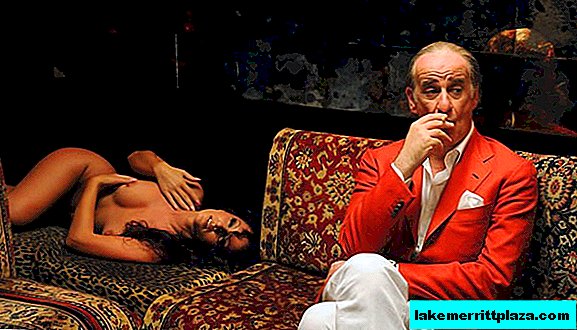The Wallraf-Richartz Museum houses a unique collection of medieval paintings and altar paintings that survived during the period of secularization, as well as a collection of graphics and impressionists.

Wallraf-Richartz Museum
The Wallraf-Richartz-Museum & Fondation Corboud Museum is a picture gallery, one of the largest in Germany, which holds the world's largest collection of medieval paintings, namely the works of the Cologne school, and a large collection of graphics.
It all started in 1827 with a collection of books and manuscripts, paintings and old coins, which was collected by Ferdinand Franz Wallraf, scientist and rector of the University of Cologne. Later Johann Heinrich Richartz, a businessman, donated a large sum to build a building for her. In 1861, the Wallraf-Richartz Museum was opened.
During the war years the museum building was destroyed. It was restored by 1956, but the Pop Art Gallery was placed there. And the exhibits of the Wallraf-Richartz Museum took their place in the Ludwig Museum. In 2001, they built a modern cube-shaped building, where they arranged a gallery. The addition “Carbo Foundation” to the name of the museum was added after the fund named after the Swiss collector Corbo donated his collection of impressionists to the Wallraf-Richartz Museum.
Collection of medieval paintings

Stefan Lochner "Madonna in the Veil of Roses"
The basis of the collection of medieval painting (XIII-XVI centuries) is the altar paintings collected by Wallraf during the period of secularization. Among the masterpieces - the work of Stefan Lochner "Our Lady in the Arbor of Roses", approx. 1448, and the Last Judgment, executed on an oak plank, 1435; a series of paintings with scenes from the life of St. Ursula against the backdrop of Cologne; paintings by unknown artists of the Cologne school from the churches of St. Severin, St. Veronica, St. Lorenza et al. A collection of medieval paintings is located on the second floor of the museum.
Baroque Department

Francois Boucher "Resting Girl", 1752
The Baroque department (XVII-XVIII centuries) is located a floor above. The exhibition reflects the diversity of art after 1550, and presents artists from the school of the northern Netherlands. These are Anthony van Dyck, Peter Paul Rubens, Francois Boucher, Rembrandt, Merten van Heemskerk, Paris Bordone, Jan Victors.
19th Century Department

Vincent Van Gogh "The Bridge at Arles", 1888
The development of art in the XVIII-XIX centuries. traced by the works of artists from the exposition of the Department of the XIX century, which is located on the 4th floor. Basically, the works of German painters are presented here, including the artist from Cologne Wilhelm Leible, Max Lieberman and Gustave Courbet, the symbolist Arnold Böcklin and others.
The collection of the Corbo Foundation, which is located on the fifth floor, also entered the same exposition. Works of late impressionism are exhibited here. These are the works of Renoir, Van Gogh, Monet, Sisley, Cezanne, Munch.
The sculptures of Pierre-Auguste Renoir, Hudon, Auguste Rodin, Rudolf Shadov are also presented in the Department of the XIX century.
Graphics collection

Rembrandt's Three Crosses, Etching, 1653
About 75 thousand works include a collection of graphics (Middle Ages - XX century). Among them are elegant miniatures on parchment, unique drawings on paper and cardboard, albums and prints made by various methods. These are the works of artists Albrecht Durer, Luca Cambiazo, Leonardo da Vinci, Raphael, Rembrandt, Auguste Rodin and others.
In the museum, all exhibits are signed in English. You can take an audio guide, but also in English. In addition to permanent exhibitions, the gallery also hosts temporary exhibitions.
How to get there
Take the metro to Dom / Hauptbahnhof station.
How do I save on hotels?
Everything is very simple - look not only at the booking. I prefer the search engine RoomGuru. He is looking for discounts at the same time on Booking and on 70 other booking sites.








